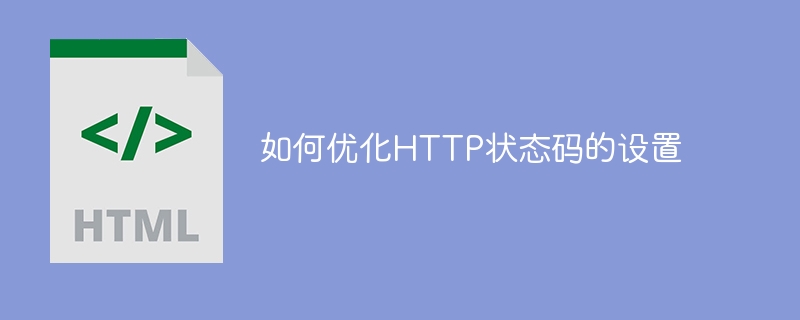

How to optimize the setting of HTTP status code
HTTP status code is an important part of identifying HTTP requests and responses. It indicates the processing result of the request. Correctly setting the HTTP status code can help us better understand and handle the status of HTTP requests. When optimizing the settings of HTTP status codes, we need to consider the following aspects: error handling, redirection, cache control, and security. The following will introduce in detail how to optimize the setting of HTTP status codes in these aspects and provide specific code examples.
Sample code:
// 返回404 Not Found状态码
if (resource === null) {
res.sendStatus(404);
}
// 返回400 Bad Request状态码
if (request.params === null) {
res.sendStatus(400);
}
// 返回500 Internal Server Error状态码
try {
// 执行一些可能引发错误的操作
} catch (error) {
res.sendStatus(500);
}Sample code:
// 返回301 Moved Permanently状态码 res.redirect(301, 'https://new-location'); // 返回302 Found状态码 res.redirect(302, 'https://temporary-location');
Sample code:
// 返回304 Not Modified状态码
if (resource.unmodified(request.headers['if-none-match'])) {
res.sendStatus(304);
}
// 设置Cache-Control头部信息
res.setHeader('Cache-Control', 'public, max-age=3600');Sample code:
// 返回401 Unauthorized状态码
if (!request.isAuthenticated()) {
res.sendStatus(401);
}
// 返回403 Forbidden状态码
if (!request.isAllowed()) {
res.sendStatus(403);
}Through the above optimization settings, we can better handle the status of HTTP requests and improve the user experience and security of the website. In practical applications, we need to select the corresponding status code and code implementation based on specific business needs and development framework. At the same time, we also need to be careful not to abuse status codes to avoid causing trouble to developers and users.
The above is the detailed content of Optimize the method of setting HTTP status code. For more information, please follow other related articles on the PHP Chinese website!
 what is optimization
what is optimization
 Baidu keyword optimization software
Baidu keyword optimization software
 Baidu SEO keyword ranking optimization method
Baidu SEO keyword ranking optimization method
 How to get http status code in PHP
How to get http status code in PHP
 Introduction to shortcut keys for minimizing windows windows
Introduction to shortcut keys for minimizing windows windows
 Solution to computer black screen prompt missing operating system
Solution to computer black screen prompt missing operating system
 What does nohup mean?
What does nohup mean?
 Introduction to the characteristics of virtual space
Introduction to the characteristics of virtual space




